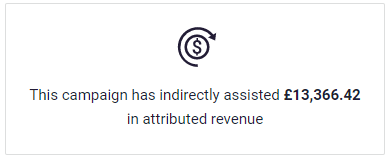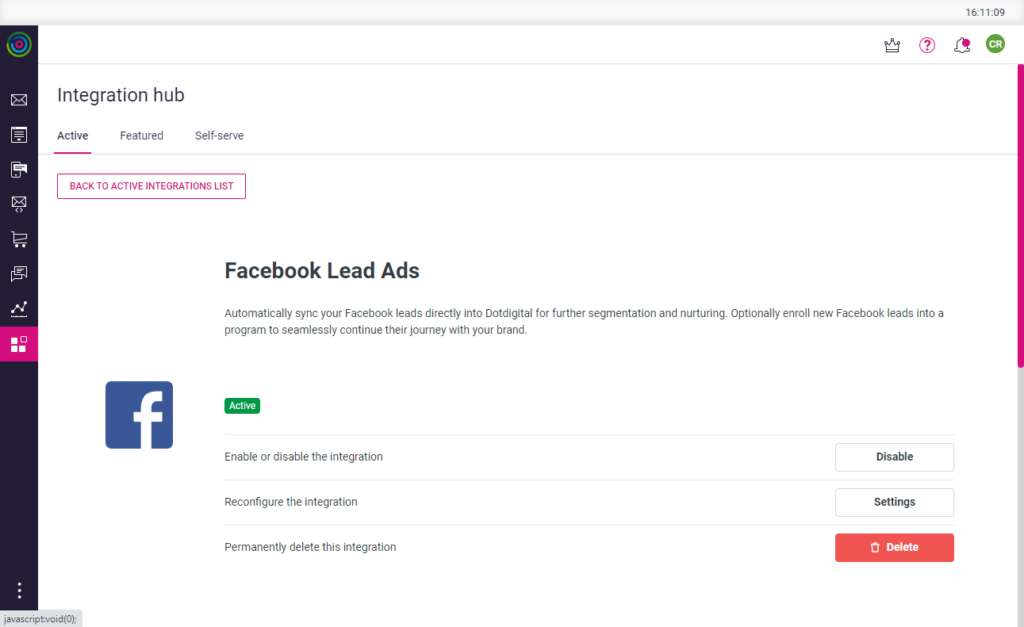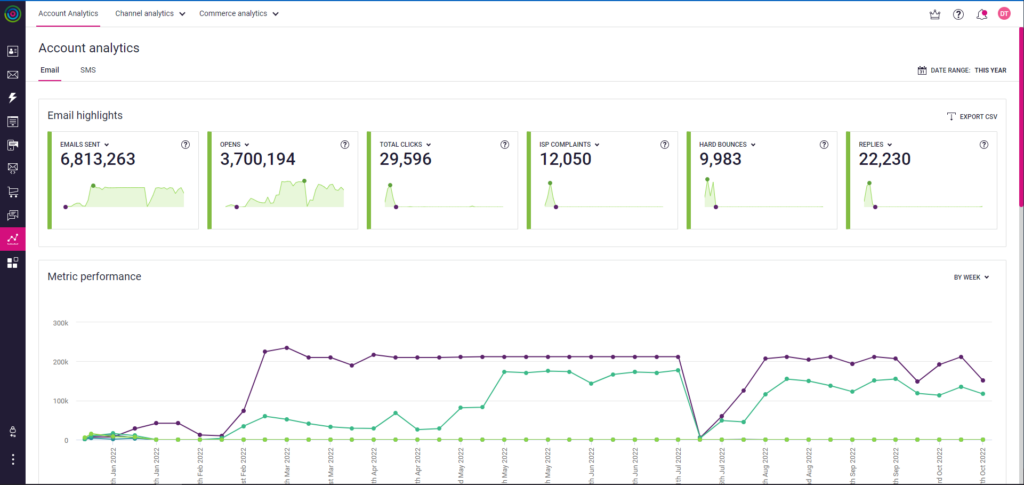What’s new in Dotdigital: improved analytics and insights

As we reach the end of 2022, it’s time for our fourth and final product release of the year. At Dotdigital we’re committed to delivering continuous innovation and empowering marketers with the tools necessary to overcome every obstacle.
As we began planning this release, we knew it was vital that we understand the challenges you’ll be facing soon. That meant thinking about the economic uncertainty facing marketing teams around the world.
So, with this release, we bring you advanced features to navigate the rocky road ahead. The threat of a global recession is looming over economies everywhere. As intelligent marketers you need to be able to:
- Demonstrate the ROI of your marketing efforts
- Report on successes and optimize where necessary
- Reach audiences at the right moment to drive conversion
- Generate new leads efficiently and effectively
- Adapt to the changing demands of your audience
Our latest feature update aims to make all this possible and so much more.
Let’s dive in.
Multi-touch revenue attribution
From today, you will be able to gain greater insights into the customer journey and demonstrate the genuine value delivered by your marketing efforts.
How has Dotdigital’s revenue attribution changed?
Dotdigital’s previous advanced revenue attribution feature was an inference-based, last-click model. This model attributed the completion of a sale to the final engagement point customers made when purchasing from you.
How does multi-touch attribution work?
Our new multi-touch revenue attribution model goes even further by taking into account all touchpoints in your customers’ journey and assigning credit to each. By assigning “assisted revenue” to each email campaign your customer interacted with before a purchase you will get a holistic understanding of the marketing lifecycle and can demonstrate the full value of your efforts.

Why is multi-touch revenue attribution important?
Multi-touch revenue attribution gives you an overview of what campaigns have the highest level of influence on each sale you make.
There is an argument that first- or last-touch is more important. First-touch attributes value to the product, page, offering, or campaign that first attracted your customer. Last-touch focuses on the moment when a customer commits to purchasing from your business. It’s simpler, certainly, but simple isn’t always the best.
Only focusing on first- or last-touch revenue attribution could result in you planning your marketing spend based on skewed data. Multi-touch attribution gives credit where credit’s due. First- and last-touch attribution doesn’t explain how a customer can land on your website looking at Crockpots but ends up purchasing an Air Fryer. Multi-touch does, and it reveals the value behind every stage of your marketing campaign.
The insights you’ll gain from using multi-touch attribution will enable you to make more effective and efficient decisions when it comes to the allocation of budgets, plus the planning of your future campaigns. And as a bonus, it allows you to tweak those campaigns already in action.
How to get started with multi-touch attribution
Our new multi-touch revenue attribution feature is available to all ecommerce marketers who have access to the ecommerce area of Dotdigital.
Facebook lead ads
In our latest update, you can now sync contacts from your Facebook lead ads directly into your Dotdigital account. This means you can now easily add them to nurture and re-engagement campaigns to efficiently grow your marketing lists and engage new audiences.
How does Dotdigital’s new Facebook ad sync work?
Dotdigitial’s new integration with Facebook lead ads sync contacts automatically from your Facebook account into your Dotdigital account. Live lead ads on Facebook are linked to an ‘instant form’ which collects customer information such as email, phone number, and custom preferences. Once they’ve clicked on your advert and filled in this form, data is seamlessly synced, so you have everything you need to deliver personalized marketing.

How will Facebook ads sync improve your marketing?
With an economic downturn facing consumers all over the world, they’re becoming understandably picky about where and with whom they spend their money. Simultaneously, with budget cuts looming and attention focusing on profits and ROI, you need to rethink your acquisition strategies to make them more cost-efficient.
Our new integration with Facebook lead ads makes it easier for you to pivot and discover new customers and bring them into your marketing audience. With it, you can:
- Identify potential new customers for your business
- Collect vital subscriber information for personalized communications
- Understand the behaviors and interests of your potential clients
- Encourage the download of brochures or whitepapers
- Get prospects to enroll in your automation programs
All-in-all, this update will save your team time and money by removing all manual workflows and providing you with the vital information you need to deliver conversion-driving campaigns.
How to get started with Facebook lead ads
Good news, our Facebook lead ads integration is ready to go. All you need to do to get started is go into your Dotdigital account and install the integration from the self-serve integration tab, in the “social” section. After this, you can connect your business’ Facebook account to Dotdigital by logging into your brand’s Facebook account and begin syncing data.
Shopify Hydrogen
The pressure is on for ecommerce brands to stand out from the crowd and meet customers where they are – on any device. Hydrogen, Shopify’s headless commerce framework, makes this possible. For this release, we’re giving existing Shopify merchants early access to our brand-new Hydrogen integration.
How does Dotdigital work with headless commerce solutions?
Headless commerce solutions separate your frontend store from the backend to deliver more agile and consistent experiences for customers. Traditional commerce solutions can connect with third-party integrations but can cause problems to the storefront due to poor architecture or code bloat. This problem is solved with headless commerce which allows data to flow seamlessly from both the front and backend into Dotdigital.
How to achieve a seamless marketing-to-store handover?
Dotdigital’s new toolkit for Shopify Hydrogen means you can now craft outstanding customer experiences that range from their first touchpoint to their final purchase and beyond. Simply set up the integration, enable the automatic data flow, and reap the benefit from Dotdigital’s suite of ecommerce features.
What does early access to Dotdigital’s Hydrogen integration mean for Shopify merchants?
By giving Shopify merchants access to a live demo Hydrogen storefront, we want to make the transition to headless commerce as smooth as possible for our customers.
This means, rather than having to start from scratch, you’ll be able to see how we’ve set up programs such as an abandoned cart, web behavior tracking, and live chat in a Hydrogen-powered store. Through this, you’ll be able to set up your store and store-based automations quicker and easier than starting from square one.
How to get started with the Hydrogen integration
When we’re Hydrogen-ready be able to find us in the Shopify app store. Our partners and developers can get their hands on the toolkit through GitHub. For more information, check in with your Customer Success Manager or Sales representative.
Push notifications
Catching the attention of your customers is not an easy feat. At Dotdigital, we understand this, and that’s why our platform helps you tap into and automate every channel at your fingertips. In this release, we’ve made some important changes to push notifications to ensure they work for you, every time.
How have we improved push notifications?
Push notifications aren’t new, but they haven’t always been the most seamless of experiences for many customers. Think of that moment when your favorite fast-food delivery service sends you a discount to be used that very day. You click on the notification but nothing happens. There’s no link to what they told you about.
So, what have we done about it? We’ve enabled deep linking for your notifications. That means customers who click on your notification will be taken directly to the appropriate page. That 15% discount can finally be claimed and conversions will increase.
As well as improving deep linking, we’ve enabled the ability for notifications to link directly to a website or landing page if the deep linking function doesn’t give the experience you want. Reporting on all campaigns is essential, no matter the channel, so we’ve ensured you can get full analytics of your push campaigns. By monitoring your push notification interaction rates you can use your performance data to optimize your campaigns.
How to get started with Push notifications?
If you’re new to push or want to find out more about how to get started with Dotdigital’s push functionality, you can read all about it in our help center.
Also coming in this release
Consolidated analytics
Account analytics for email and SMS provides you with a bird’s-eye view of your account in one place. This enables you to easily see performance stats across the board. All your KPIs are available at-a-glance, with the ability to deep dive into your results to optimize your marketing for standout results. Previously launched as cross-account analytics our new consolidated analytics is now available for all, to give you better insight into your overall performance.
As part of this, the previous email-focused dashboard is being replaced with an analytics landing page which will include data for SMS as well as email.

Tagging and filtering
When cross-account analytics first launched in May 2022, it gave businesses with multiple child accounts the ability to pull together insights from various accounts. In this update, we have launched the ability to tag and group your accounts with custom tags, giving you the ability to filter and compare campaign performance in a way that matters most to you.



